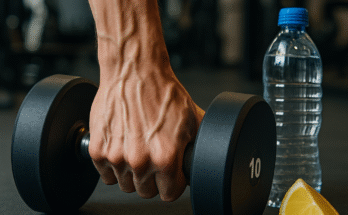The Art of Foot Massage: Ancient Healing for Modern Wellness
Foot massage isn’t just a luxury—it’s a timeless practice that bridges ancient wellness traditions with today’s fast-paced world. From easing physical aches to calming the mind, this therapeutic ritual has been a go-to remedy for centuries. Let’s explore why rolling up your sleeves (or socks!) for a foot massage might just become your new favorite form of self-care.
Why Your Feet Deserve a Massage
-
Sleep Savior: Struggling with insomnia? A pre-bedtime foot massage can work wonders. Sit comfortably, elevate one foot to knee level, and use circular motions on the sole with oils like coconut or olive oil. The gentle pressure relaxes nerves, preparing your body for deeper rest.
-
Energy Booster: Rub olive oil in circular motions to kickstart blood flow. Better circulation = less fatigue, more pep in your step.
-
Mood Magic: Swap stress for serenity. Foot massages reduce anxiety, combat depression, and sharpen mental clarity by activating pressure points linked to brain function.
-
Pain Relief: Target headaches, migraines, or joint stiffness. Regular sessions improve flexibility in muscles and ligaments, offering relief for conditions like arthritis or spinal discomfort.
-
Detox Dynamo: Increased sweating during massages flushes toxins, supports immunity, and even helps regulate body temperature.
-
Pregnancy Comfort: For expecting moms, foot massages reduce swelling and fluid retention common in the third trimester.
How to Master a DIY Foot Massage
Step 1: Set the Scene
-
Sit in a cozy chair, back supported. Place a towel under your feet to catch drips.
-
Fill a basin with warm water (add lavender or eucalyptus oil for aromatherapy perks).
Step 2: Prep & Relax
-
Soak feet for 10 minutes to soften skin. Gently scrub with a washcloth to slough off dead cells.
-
Pat dry with a soft towel.
Step 3: Oil Up & Glide
-
Warm 1–2 tbsp of coconut or olive oil in your palms. Start at the toes, using thumbs to press into the arch in circular motions.
-
Work up to the heel, then ankles. Focus on tense areas—knead gently but firmly.
Step 4: Pressure Points
-
For headaches: Press the base of the big toe (linked to the head).
-
For cramps: Massage the inner arch (connects to the lower back).
Step 5: Hydrate & Rest
-
Slip on cotton socks post-massage to lock in moisture. Let the oils work overnight for baby-soft soles.
Pro Tips for Next-Level Relaxation
-
Timing is Key: Massage before bed to unwind or post-workout to ease muscle tension.
-
Upgrade Your Tools: Use a wooden massage roller or a warm towel wrap for deeper relief.
-
Consistency Wins: Aim for 2–3 sessions weekly to maintain results.
Foot massage is more than pampering—it’s a science-backed path to holistic health. Whether you’re battling deadlines or chasing toddlers, a 15-minute session can reset your body and mind. So, dim the lights, press play on calming tunes, and let your feet lead the way to relaxation. Your whole self will thank you!





